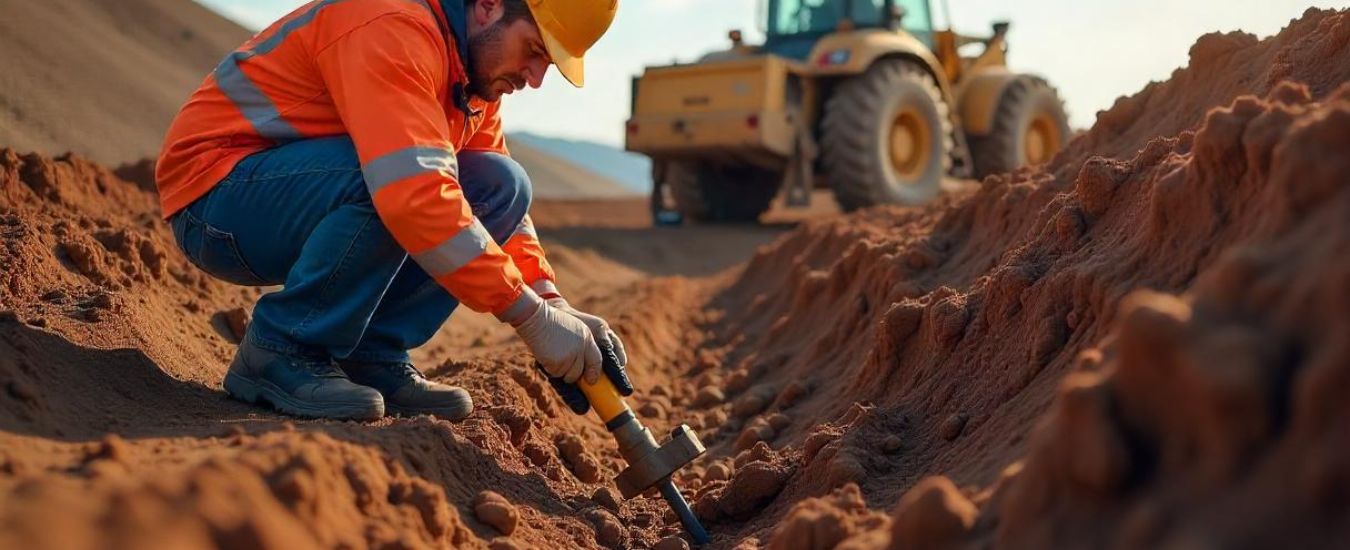Before you break ground on any building or infrastructure project, the first thing you must know is what’s beneath your feet — literally. That’s where soil exploration comes into play.
Soil exploration is the foundation of the foundation. From choosing the right construction materials to ensuring a structure’s stability for decades, its role is vital. Whether you’re building a home or a skyscraper, never skip this critical step.
What is Soil Exploration?
Soil exploration is the process of investigating and testing the ground conditions at a proposed construction site. It helps engineers understand the physical and chemical properties of soil and subsoil layers.
Why is Soil Investigation Important in Construction?
Imagine building a house on a sponge versus building it on rock. The performance of your structure will heavily depend on what kind of soil lies underneath. A thorough soil study helps in:
- Choosing the right foundation system
- Preventing settlement issues
- Planning for earthquake or water-table risks
Objectives of Soil Exploration
Every exploration has a goal — and in construction, soil exploration aims to provide data-driven clarity on the following:
Understanding Subsurface Conditions
This helps determine the soil profile, type of rocks, and groundwater level.
Determining Bearing Capacity
Knowing how much load the soil can carry is essential for safe structure design.
Assessing Soil Suitability for Foundations
Different soils behave differently under load — clay expands, and sand may shift. Engineers need to know what they’re dealing with.
Identifying Soil Layers and Groundwater Levels
Soil stratification affects how deep your foundations should go. Water table levels may require waterproofing or dewatering.
Reducing Construction Risks and Costs
A thorough soil study prevents costly design errors, delays, or — worse — structural failures.
Stages of Soil Exploration
Soil exploration isn’t a one-day job. It’s a multi-stage process:
Desk Study and Site Reconnaissance
Start with gathering information — topography, past land use, and satellite maps.
Preliminary Exploration
Conduct shallow tests, boreholes, and field observations to get an initial idea.
Detailed Site Investigation
More extensive borehole drilling, sampling, and testing are done to a greater depth.
Laboratory Testing
Collected soil samples undergo tests to determine moisture content, shear strength, plasticity, etc.
Report Preparation and Recommendations
A geotechnical report is prepared, guiding architects and civil engineers in foundation design.
Methods of Soil Exploration
Now, let’s dig into the tools and techniques.
Direct Methods
These give actual samples from the ground.
Test Pits and Trenches
Used for shallow sites, workers manually dig 1–3 meter deep pits.
Boring Methods
- Auger Boring: For soft soils.
- Rotary Drilling: For deeper, hard-to-drill soils.
Semi-Direct Methods
Standard Penetration Test (SPT)
Measures soil resistance to a standard hammer blow. Common in borehole testing.
Cone Penetration Test (CPT)
A cone is pushed into the soil to measure resistance without drilling.
Geophysical Methods
Non-invasive and quick — let’s explore these further below.
Geophysical Methods of Soil Exploration – Explained
Geophysical techniques detect soil properties using physics-based sensors.
Seismic Refraction Method
Sound waves measure the hardness of soil or rock layers.
Electrical Resistivity Method
Current is passed through the ground. Resistance helps identify soil type and moisture.
Ground Penetrating Radar (GPR)
Uses electromagnetic waves to locate underground utilities and voids.
When to Use Geophysical Techniques?
Ideal for large sites, inaccessible areas, or preliminary surveys.
Advantages
- Non-destructive
- Rapid and cost-efficient
- Broad site coverage
Limitations
- Less accurate for depth-specific analysis
- Interference from buried objects
Factors Influencing Selection of Soil Exploration Method
No one-size-fits-all approach here. The method depends on:
Project Size and Budget
Larger and more critical projects need more detailed investigations.
Type of Construction
High-rise buildings, bridges, or dams require in-depth borehole drilling and SPT/CPT tests.
Soil Type and Site Conditions
Rocky areas demand rotary drilling; soft, moist soils may suit auger boring or GPR.
What is Subsoil Exploration?
Difference Between Soil and Subsoil Investigation
While soil refers to the top layers, subsoil exploration investigates deeper layers, often down to the bedrock.
How Subsoil Affects Foundation Design?
Ignoring subsoil layers can lead to unstable foundations, mainly if loose sand or clay exists deeper down.
Importance of Soil Exploration in Construction Projects
Let’s recap why this process is non-negotiable.
Helps in Foundation Design
The entire load of a building rests on the soil. A misjudged design can lead to cracks or collapse.
Prevents Structural Failures
Early detection of weak zones prevents disasters like tilting, uneven settlement, and slope failure.
Assists in Material Selection and Planning
Engineers can choose suitable concrete, steel, and waterproofing systems depending on the findings.
Challenges in Soil Exploration
Even the best plans face hurdles.
Accessibility Issues
Urban or hilly sites may lack space or safe access.
Weather and Groundwater Interference
Rain or high water tables can delay or distort tests.
Interpretation Errors
Wrong readings or assumptions can lead to costly consequences.
Latest Trends and Technologies in Soil Investigation
Use of Drones and AI in Site Survey
Mapping and data collection is faster with drone-integrated sensors.
3D Soil Mapping and Real-Time Data
Software now allows interactive analysis of soil profiles in real-time, reducing manual error.
FAQs
What is the most common method of soil exploration?
The Standard Penetration Test (SPT) is widely used for its accuracy and ease in determining soil properties.
How deep should soil exploration go for residential construction?
Typically 3 to 5 meters, but it depends on local soil conditions and building load.
Can geophysical methods replace borehole tests?
Not entirely. They’re great for preliminary surveys, but direct tests like SPT provide more accurate data.
How long does a typical soil exploration take?
Small residential projects may take 2–5 days, while large commercial sites could require several weeks.
Is soil exploration mandatory for all construction projects?
Legally, it may not be mandatory everywhere, but it is strongly recommended to avoid structural and financial risks.

